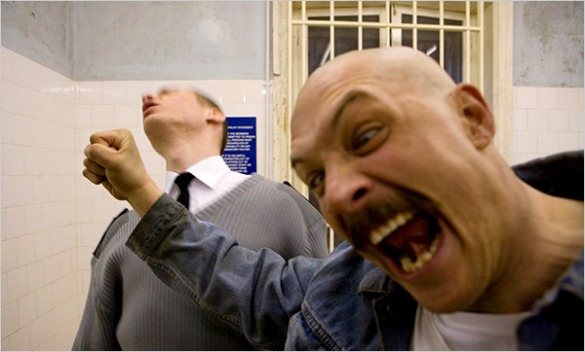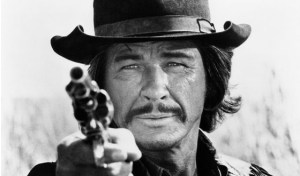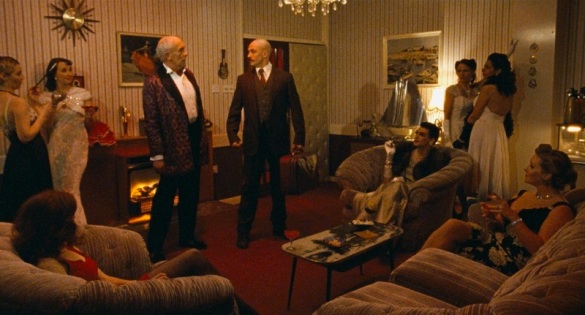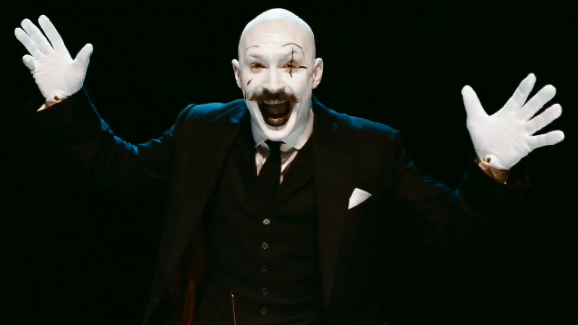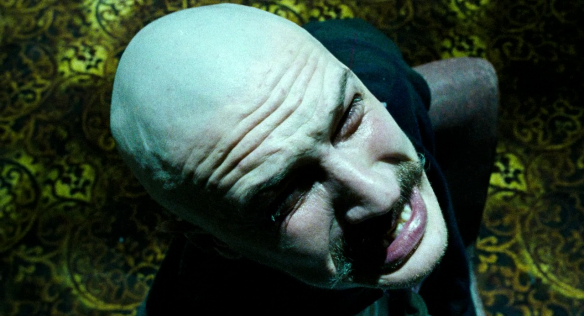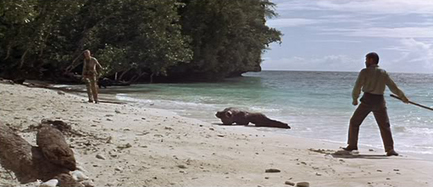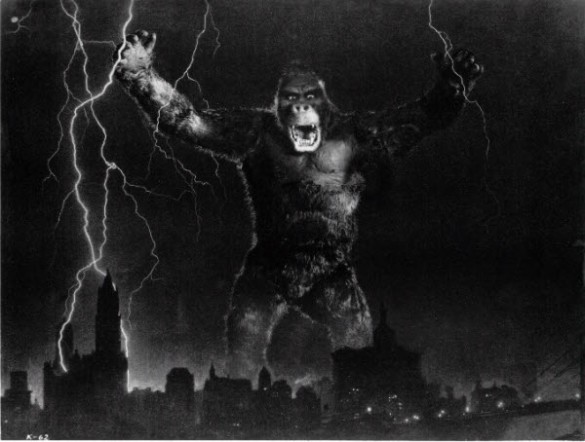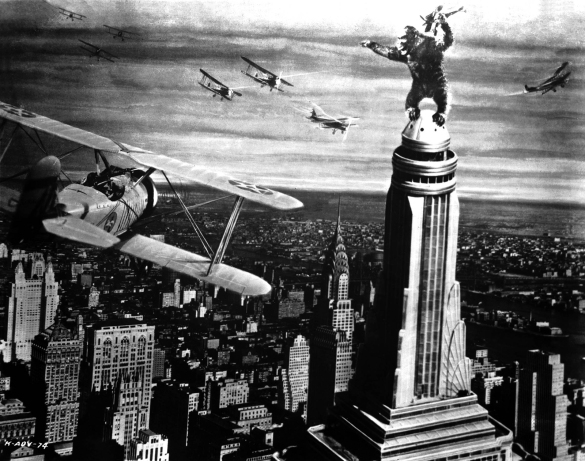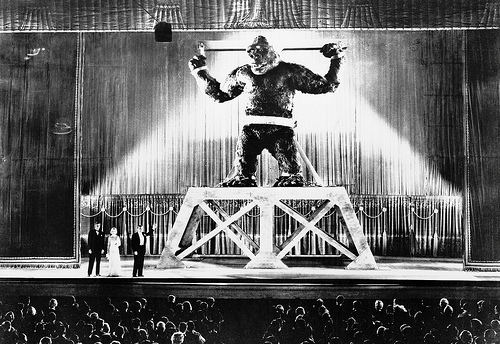One of my favorite films of 2009 seems to have been missed by many mainstream audiences at the time. Nicholas Winding Refn (Drive) directs and Tom Hardy (Dark Knight Rises) stars in the British prison film and quasi-biopic based on the life of Charlie Bronson, Bronson (2009).
Now if you are like me (a.k.a. American), you are probably thinking of Death Wish (1974) star Charles Bronson (also in The Great Escape and Once Upon a Time in the West). I made the same mistake when I first heard the title.
The British Charles Bronson is infamous for being one of the most violent and most expensive prisoners in Great Britain. Born Michael Peterson, this flamboyant, mustachioed figure has become something of a celebrity from his jail cell. He was arrested in 1974 for robbing a post office and, although his original sentence was very short, he has built up his sentence through his violent, troublesome behavior in prison. He has been released a few times, but always has managed to wind up back on the inside. He is in prison today. He has spent the past 30 years in solitary confinement. He has written books about his experiences in prison and about how to keep in shape on a prison diet. Charlie Bronson, despite his propensity for violence, is a truly intriguing personality and the film, Bronson, is an immensely pleasurable romp through his brain.
I first saw Bronson at a special screening at the wonderful Silent Movie Theater in Hollywood. I had no preconceptions going in. I didn’t know much about the film before I saw it. It was a fantastic surprise. Director, Refn, and star, Hardy, answered some questions about the film following the screening. Refn wanted the film to be more of a comment or treatise on art and the artist’s struggle. Refn saw the film more as a metaphorical biopic of himself. Tom Hardy, genuinely fascinated by the real man, said he was just a very weird person, but he has his principles. It was Hardy’s goal to show the real Bronson. Refn’s skill and attention to the craft and Hardy’s fascination with Bronson was channeled into a phenomenal performance inside of a highly energetic and stylistic movie. Refn did not set out to make a straight biopic about the famous prisoner, or even make your ordinary prison movie. And he succeeds on both counts. Bronson is a lush, kinetic descent into the odd mind of one man who is searching for something elusive and in his search sort of discovers a piece of himself.
The character of Charlie Bronson becomes a symbol for the artist’s journey. Dissatisfied and unwelcome in this confusing, ever-changing world, the extremely ambitious Bronson seeks to create his own reality within the system.
Violence is just another means of self-expression in this case. The movie takes place almost entirely inside the mind of Bronson. He stands alone on a stage in his head and recounts his story to the attentive and empathetic theater patrons of his imagination. He tells of his boyhood and the fights he would get into. He tells of his first incarceration and the wondrous freedom he discovered inside. He tells of his bare-knuckle boxing career and of the women he may have loved. He tells of his commitment—by the authorities who were confused with what to do with him—to a mental institution he did not particularly care for. He tells of the havoc he vengefully and desperately wreaked on his doctors and wardens. He pridefully tells of the mayhem and chaos he spread throughout the several prisons he was transferred to. He tells of his time in solitary confinement. And he tells of his foray into the world of art.
Bronson flows like a series of alternatively violent and humorous montages set to some of the best compilation of tunes you are likely to find in a single movie. A heavily drugged Bronson struggling to leave a sea of dancing loonies to the Petshop Boys “It’s a Sin” is one of the most hilarious scenes ever (and slightly reminiscent of Twelve Monkeys). The whole movie is a show and it is centered around Charlie Bronson’s (Tom Hardy’s) dynamic performance. In one minute Bronson will be bone-crunching action and in the next minute, cutting comedy…but most of the time it’s a bit of both.
There is no place in the world for a troubled artist or for Charlie Bronson because the people in charge see the world differently and relate to it differently. What is it that either entity truly desires? Who can put words to it? Bronson is never sure what he is looking for, but he keeps looking anyway. An artist or Charlie Bronson may never hammer out the specifics of their goals, but they will constantly try to change it all and make the world make sense to them by applying their own rules to it.
Why see it? The music is great and imaginatively employed. The direction and pace are dynamic and beautifully stylized. The tempo and comedy are odd and disturbing (in a very good way). And Tom Hardy’s performance is one of the zaniest and most enjoyable performances I’ve seen in years. The film is an absolute delight. At the end of the day you don’t have to know what the film was really trying to say beneath its tough, rough and tumble exterior because it’s just a really fun movie. Refn has ironically called this “man movie” a rather “feminine film” because of the themes and the way the story is told. You will simply have to watch it and see for yourself.
After the screening at the theater I had to shake Mr. Hardy’s hand and thank him for such a wonderful show. It was a privilege I have never had before (thanking the actors of the film following the movie) and I’m glad I had the opportunity to do so with Bronson. Go watch it.
Originally published for “The Alternative Chronicle” March 29, 2010.

